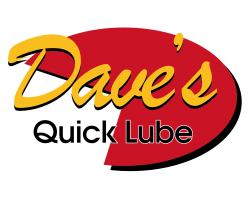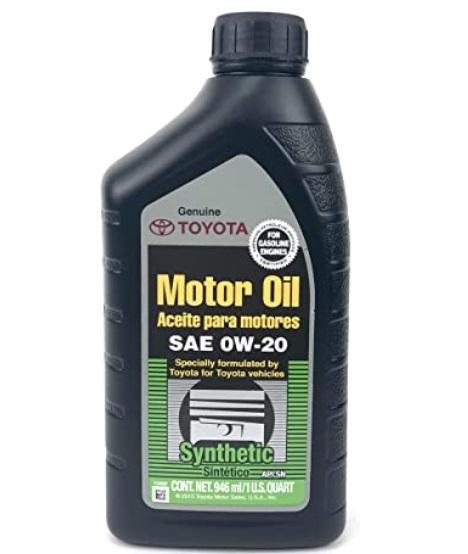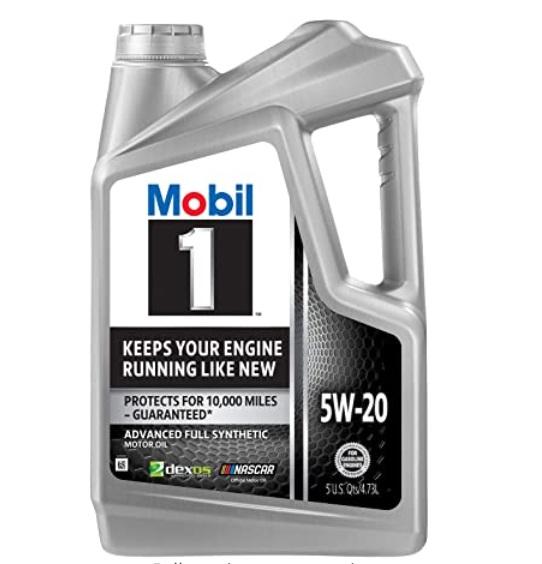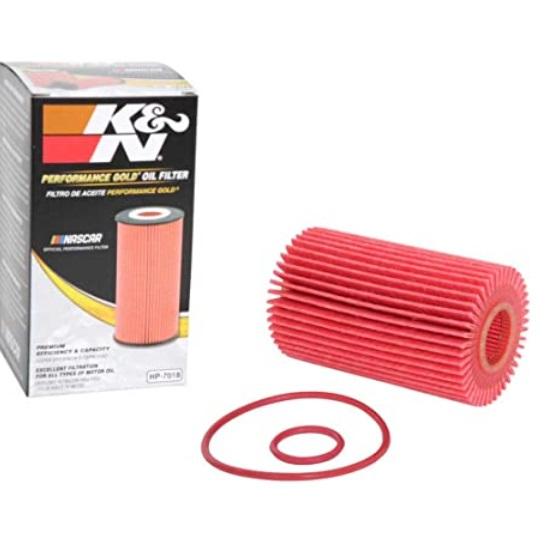Your 2008 Toyota Sequoia needs a new oil change and you’re not sure where to start. Don’t worry, we’re here to help! Below is a step-by-step guide that outlines the process of changing your car’s engine oil and filter.
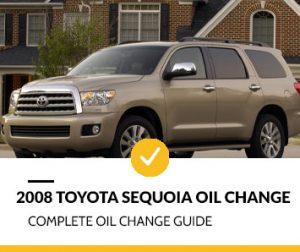
2008 Toyota Sequoia Oil Change Guide [hide]
2008 Toyota Sequoia Oil Type

Toyota recommends choosing a quality motor oil that meets the standards set by Toyota. Sequoia models are shown to do well with either synthetic or conventional options, but high mileage drivers may want to consider an extra-protection formula for their 2008 instances.
VISCOSITY GRADE
Toyota recommends using the oil “Toyota Genuine Motor Oil” for a 4.7 L V8 (2UZ-FE) engine of viscosity SAE 5W-30 is the best choice for good fuel economy, and good starting in cold weather.
And, for 5.7 L V8 (3UR-FE) engine recommends using “Toyota Genuine Motor Oil” oil of viscosity SAE 5W-20 or 0W-20. However, SAE 0W-20 is the best choice for good fuel economy and good starting in cold weather.
CAPACITY
The oil capacity for a 4.7 L V8 (2UZ-FE) engine with a filter is 6.6 quarts (6.2 liters) whereas, without a filter is 6.0 quarts (5.7 liters).
The oil capacity for a 5.7 L V8 (3UR-FE) engine with a filter is 7.4 quarts (7.0 liters) whereas, without a filter is 6.9 quarts (6.6 liters).
SPECIFICATION OF OIL
Use Toyota-approved “Toyota Genuine Motor Oil” or equivalent to satisfy the grade and viscosity said above.
Recommended oil type is:
• API SJ, ILSAC GF-Ι. Not meeting these standards can result in engine damage due to low-quality oils that do not perform well under high temperatures and pressures.
Make sure that you use the recommended oil.
Signs of an expired or low-quality oil are:
- Reducing fuel economy
- Engine noise
- Smokescreen coming out from your tailpipe
- Loss in power while acceleration.
If these signs occur then it is time to change your oil.
You can use oil from this list of brands to change your engine oil in 2008 Toyota Sequoia:
- Mobil
- Valvoline
- Castrol
Make sure that you are using the recommended grade, viscosity, and weight of oil when changing your engine oil in the 2008 Toyota Sequoia. If these grades are not met then it can lead to engine problems or damage which is why they need to be followed strictly each time you perform an oil change on this vehicle.
2008 Toyota Sequoia Oil Change Intervals
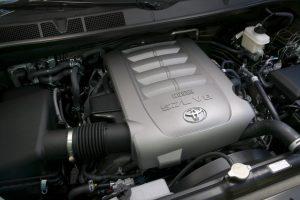
For 2008 Toyota Sequoia oil change intervals are every 12 months or 12,500 miles. This oil change interval is for both city and highway driving conditions.
For the first time ever in a 2008 to 2016 model year Toyota vehicle you can use regular-grade oil with an Energy Conserving rating of 0W-20 instead of synthetic blend oils which will save you money at the pump while still providing excellent protection against corrosion, piston scuffing, rust and wear damage caused by high-pressure road salt used in colder climates.
If your engine uses conventional motor oil it may be beneficial to change out the filter more often than recommended if this engine has 100K+ mileage on it. There could also be issues related to not using synthetic oil that might benefit from changing the oil and filter out at a more frequent interval.
Best Oil for 2008 Toyota Sequoia
If you want the best protection for your 2008 Toyota Sequoia, then go with a full synthetic oil.
A full synthetic is made from better base oils and has more additives, resulting in superior performance over conventional oils. They also flow easier at low temperatures, which means less wear on moving parts as well as fuel economy benefits due to improved engine efficiency (up to six percent).
These advantages come at a higher price but will last longer too (if done right), so it’s an investment worth making if you plan on keeping the car long-term or don’t mind paying extra upfront.
Oil (By Manufacturer) – Toyota recommends using “Toyota Genuine Motor Oil” SAE 5W-30, SAE 5W-20 or SAE 0W-20.
Oil (Our Choice) – Mobil 1 Synthetic Motor Oil 5W-20. Mobil 1 5W-20 is an advanced full synthetic motor oil designed to keep your engine running like new by providing exceptional wear protection, cleaning power, and overall performance. Mobil 1 5W-20 synthetic motor oil meets or exceeds the requirements of the industry’s toughest standards and outperforms conventional motor oils. Mobil 1 technology comes as standard equipment in many different vehicles, including select high-performance vehicles. Mobil 1 5W-20 is a high-performance motor oil for all types of cars where this viscosity is recommended.
Oil Filter (By Manufacturer) – Toyota recommends using a Toyota Genuine Oil Filter or an aftermarket equivalent such as K&N Premium Oil Filter.
How to Change Oil By Yourself – Step by Step
2008 Toyota Sequoia oil change should be done regularly to ensure the safety and maximum life of your 2008 Toyota Sequoia engine.
Changing your 2008 Toyota Sequoia’s oil is a relatively easy process that will take about 30 minutes for most people to complete, but it’s one task you shouldn’t skip as part of routine car maintenance. Not only does changing the oil help maintain optimum power by removing dirt, grime, and other impurities from inside your vehicle’s engine; it also extends its lifespan (which means saving money in the long run).
With our step-by-step guide on how to change out an older model 2008 Toyota Sequoia’s motor oil – using basic tools – we can guarantee that you’ll be able to do this simple job yourself.
STEP 1: PREP
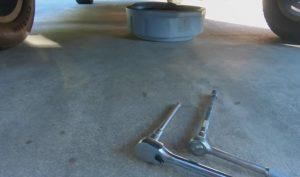
YOUR TOOLS
You will need the following before you begin:
– Drain pan to catch oil (you can use an empty container or bucket).
– Wrench (14mm I believe is needed for this process, though always double-check your own car’s manual). If you don’t have a wrench available at home, be sure to bring one with you. You should also try and get one that has extensions if possible because it makes getting into small spaces much easier. The longer the handle on the wrench is, the better off you’ll be in most cases.
– Oil filter wrench (this is not required, but recommended).
STEP 2: REMOVE THE COVER
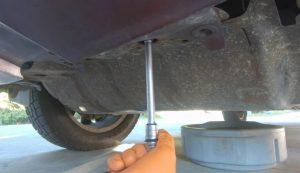
There are three bolts/nuts holding down a metal frame that holds any hoses in place as well as another bolt between those two holes which comes out from the bottom of the engine block.
The oil drain plug is located on that frame and will be covered by a rubber gasket to prevent leakage if not removed which you’ll need to do before draining your oil.
STEP 3: DRAINING THE OIL
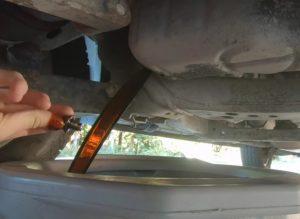
Now that all the necessary items are out it’s time for some action! You can start by removing any hoses or other components in order to get access to where you need, but make sure anything else like coolant lines, etc aren’t damaged when doing so (look at your car’s manual for more detailed instructions on this).
Once that is out of the way you can begin draining your oil. Do this by removing the drain plug first, then remove the filter afterward (if you have an oil filter wrench use it now before getting under there with a regular crows foot tool) and let all of your old oil come pouring down into whatever container or bucket you’ve placed underneath to catch any spills.
STEP 4: PUT BACK THE DRAIN PLUG
When all the oil is drained it’s time to put the drain plug back on.
STEP 5: REPLACE THE OIL FILTER
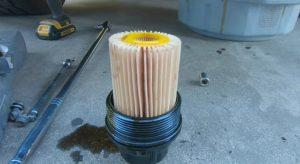
Now that you have your engine empty of old oil it’s time to replace the filter with a fresh one! Make sure when removing either, make sure all hoses are out of the way first so as not to damage any components or get hit by flying objects which can happen if there is some sort of malfunction during this process.
The oil filter is located underneath the engine. It can be found on the front driver’s side of your 2008 Toyota Sequoia. With an adjustable wrench, unscrew it by turning counterclockwise and removing it from the vehicle. There will most likely still be some oil in there so have a pan ready to collect this old oil for recycling purposes!
Replace the oil filter done and put the new filter back on. Tighten his down securely, so no leaks occur or anything gets damaged while driving afterward!
STEP 6: ADD THE NEW OIL
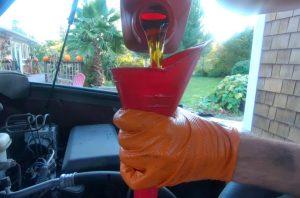
Once everything is back together it’s time to put the drain plug and oil filter back on, tighten them down securely.
Then pour in a small amount of new oil into any container, allowing your car itself to run for at least five minutes beforehand will help circulate the oil through all areas within the engine as needed which includes hoses/pipes, etc so they don’t get clogged or damaged with old stagnant oil.
Afterward check underneath your vehicle where there was once an open hole earlier now full again with fresh motor oil, making sure not to step around said area but instead stand directly above it so if anything is leaking it’ll be visible to see. If still no signs of leakage then you’re good to go!
An oil change is complete!
